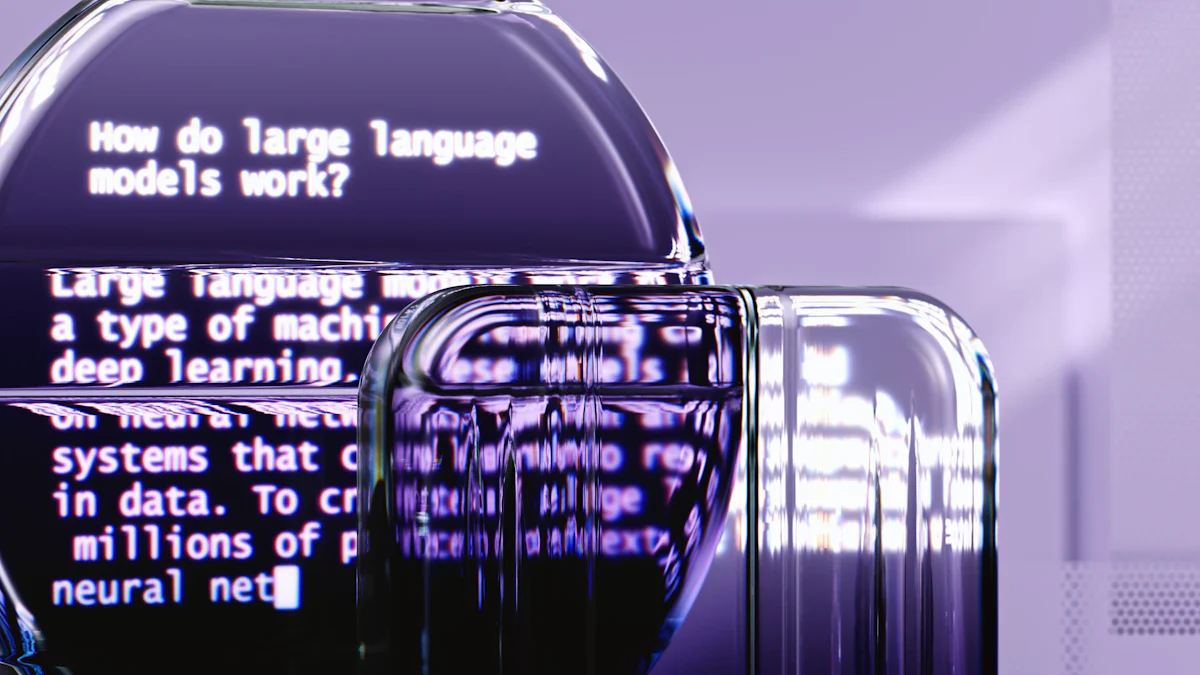How Generative Adversarial Networks Work

Generative Adversarial Networks (GANs) have revolutionized the field of artificial intelligence. You might wonder how they work. Imagine two neural networks locked in a creative duel. One network, the generator, crafts new data, while the other, the discriminator, evaluates its authenticity. This dynamic interaction leads to astonishingly realistic outputs. GANs have transformed AI and machine learning, enabling the creation of images so lifelike that they can deceive human perception. By 2026, GANs will power 80% of all GenAI application interfaces, highlighting their growing importance in deep learning.
Understanding Generative Adversarial Networks
What are GANs?
Definition and origin
Generative Adversarial Networks, or GANs, represent a groundbreaking innovation in artificial intelligence. Ian Goodfellow and his colleagues introduced this concept in 2014. They designed GANs to create new data that mimics real-world data. This innovative approach involves two neural networks: the generator and the discriminator. The generator crafts data, while the discriminator evaluates its authenticity. This dynamic interaction fosters creativity and precision in data generation.
Basic concept and purpose
The primary purpose of GANs is to generate synthetic data that closely resembles real data. You can think of the generator as an artist trying to create a masterpiece. Meanwhile, the discriminator acts as a critic, assessing the artwork's authenticity. This adversarial process continues until the generator produces data indistinguishable from real data. GANs have revolutionized machine learning by enabling the creation of realistic images, sounds, and even text. They open up new possibilities for creativity and problem-solving.
Importance of GANs in Deep Learning
Role in advancing AI
GANs play a crucial role in advancing artificial intelligence. They have transformed the way machines generate realistic and high-quality synthetic data. By enabling the creation of lifelike images and sounds, GANs have expanded the boundaries of what AI can achieve. Researchers have recognized their potential in various fields, from art and design to healthcare and entertainment. GANs have become a cornerstone of modern AI research, driving innovation and creativity.
Comparison with other models
When you compare GANs with other models, their unique adversarial training process stands out. Unlike traditional models that rely on labeled data, GANs learn from the competition between the generator and discriminator. This approach allows GANs to generate data without explicit labels, making them highly versatile. While other models focus on classification or prediction, GANs excel in generating new content. Their ability to create realistic data sets them apart from conventional machine learning models.
Components of GANs
In the fascinating world of Generative Adversarial Networks, two main components drive the process: the generator and the discriminator. These components work together in a dynamic interplay, each with distinct roles that contribute to the creation of realistic synthetic data.
The Generator
Function and role
The generator acts as the creative force within a GAN. Its primary function is to produce new data that mimics the real-world data it has been trained on. You can think of the generator as an artist trying to create a masterpiece. It takes random noise as input and transforms it into data that resembles the training set. The generator's role is crucial because it continuously strives to improve its creations, aiming to deceive the discriminator into believing that its output is genuine.
How it generates data
The process of data generation involves several steps. Initially, the generator receives random noise, which serves as a starting point. Through a series of transformations, it refines this noise into a structured output. The generator uses neural network layers to adjust and enhance the data, gradually shaping it into something that closely resembles real data. This iterative process allows the generator to learn and improve over time, producing increasingly realistic outputs.
The Discriminator
Function and role
The discriminator serves as the critical evaluator in a GAN. Its primary function is to distinguish between real and generated data. You can imagine the discriminator as a vigilant critic, always on the lookout for imperfections. It assesses the authenticity of the data produced by the generator, providing feedback that helps the generator refine its creations. The discriminator's role is vital because it ensures that the generator's output becomes more convincing with each iteration.
How it evaluates data
The evaluation process involves comparing the generated data with real data from the training set. The discriminator uses its neural network to analyze the features of the data, identifying subtle differences that indicate whether the data is real or fake. By classifying the data as either genuine or counterfeit, the discriminator provides valuable feedback to the generator. This feedback loop encourages the generator to improve its output, striving to create data that the discriminator cannot distinguish from reality.
Scientific Research Findings:
Research on the generator and discriminator roles in GANs highlights that the competition between these two components forms the cornerstone of their effectiveness. The balance between them during training is crucial for the success of a GAN.
The discriminator, acting as a classifier, evaluates the veracity of the generated data, while the generator creates synthetic data. This delicate balance can sometimes lead to unstable training, affecting the efficacy of GAN-based applications.
The Adversarial Process

In the world of Generative Adversarial Networks, the adversarial process plays a pivotal role. This process involves a unique training method and draws inspiration from game theory principles. Understanding these concepts will help you appreciate how GANs achieve their remarkable results.
Adversarial Training
Simultaneous training of generator and discriminator
In GANs, both the generator and discriminator undergo training simultaneously. You can think of this as a dual learning process where each network learns from the other's progress. The generator creates data, while the discriminator evaluates it. This simultaneous training ensures that both networks improve together, pushing each other to new heights of performance.
Competitive dynamic
The competitive dynamic between the generator and discriminator forms the core of the adversarial process. You can imagine this as a game where each player strives to outsmart the other. The generator aims to produce data that can fool the discriminator, while the discriminator works to accurately identify real from fake data. This competition drives both networks to enhance their capabilities, resulting in the generation of highly realistic data.
The Game Theory Perspective
Zero-sum game concept
The adversarial nature of GANs aligns with the zero-sum game concept from game theory. In this scenario, one player's gain is another's loss. For GANs, the generator's success in fooling the discriminator equates to the discriminator's failure to detect fake data. This zero-sum dynamic ensures that both networks remain in constant competition, fostering continuous improvement.
"Because the GAN framework can naturally be analyzed with the tools of game theory, we call GANs 'adversarial'."
Nash equilibrium in GANs
The concept of Nash equilibrium also applies to GANs. In this state, neither the generator nor the discriminator can improve their performance without altering the other's strategy. You can view this as a balance point where both networks have optimized their abilities. Achieving Nash equilibrium means the generator produces data indistinguishable from real data, marking a successful training outcome.
By understanding these aspects of the adversarial process, you gain insight into how Generative Adversarial Networks operate. This knowledge highlights the innovative use of game theory in AI, showcasing the sophisticated mechanisms behind GANs' success.
Training GANs
Training Generative Adversarial Networks (GANs) involves specific techniques and presents unique challenges. Understanding these aspects will help you appreciate the intricacies of GAN training.
Training Techniques
Gradient Descent
Gradient descent plays a crucial role in training GANs. This optimization algorithm helps adjust the weights of the neural networks to minimize the error in predictions. You can think of it as a method that guides the generator and discriminator toward better performance. By iteratively updating the network parameters, gradient descent ensures that both components learn effectively from their mistakes.
Backpropagation
Backpropagation is another essential technique in GAN training. It involves calculating the gradient of the loss function with respect to each weight by the chain rule, allowing the network to update its weights efficiently. This process helps the generator and discriminator improve their outputs over time. You can view backpropagation as a feedback mechanism that fine-tunes the networks, enhancing their ability to generate and evaluate data.
Challenges in Training
Mode Collapse
Mode collapse represents a significant challenge in GAN training. It occurs when the generator produces limited varieties of outputs, failing to capture the diversity of the real data. You might encounter this issue when the generator focuses too narrowly on fooling the discriminator, neglecting the broader range of possibilities. Researchers are actively exploring new directions to overcome mode collapse and enhance GAN capabilities.
Convergence Issues
Convergence issues can also arise during GAN training. The delicate balance between the generator and discriminator often leads to unstable training. When one network outpaces the other, it disrupts the learning process, causing convergence problems. Maintaining this balance is crucial for successful GAN training. Researchers continue to investigate techniques to improve training stability and ensure effective convergence.
"The delicate balance between the generator and discriminator can result in unstable training." — MarkovML
By understanding these training techniques and challenges, you gain insight into the complexities of working with GANs. This knowledge equips you to navigate the intricacies of GAN training, fostering a deeper appreciation for the innovative mechanisms behind these networks.
Applications of GANs

Generative Adversarial Networks (GANs) have found applications across various fields, showcasing their versatility and transformative potential. You will discover how GANs contribute to image generation and data augmentation, enhancing creativity and efficiency in numerous industries.
Image Generation
Creating realistic images
GANs excel in creating realistic images that closely resemble real-world visuals. You can think of GANs as digital artists capable of producing lifelike images from scratch. This capability has revolutionized fields like entertainment and media, where generating high-quality visuals is crucial. For instance, GANs can create photorealistic characters for video games or movies, enhancing the visual experience for audiences.
Style transfer
Style transfer is another fascinating application of GANs. This process involves transforming an image's style while preserving its content. Imagine applying the artistic style of Van Gogh to a modern photograph. GANs make this possible by learning the unique features of different styles and applying them to new images. This technique has significant implications for art and design, allowing you to experiment with various styles and create unique visual content.
Data Augmentation
Enhancing datasets
In data augmentation, GANs play a pivotal role by generating additional data to enhance existing datasets. You can use GANs to create synthetic data that mimics real-world data, increasing the diversity and size of your dataset. This process is particularly valuable in fields like healthcare, where acquiring large datasets can be challenging. By augmenting data, GANs help improve the performance of machine learning models, leading to more accurate predictions and insights.
Use in training other models
GANs also contribute to training other models by providing diverse and high-quality data. You can leverage GAN-generated data to train models in scenarios where real data is scarce or expensive to obtain. For example, in finance, GANs can simulate market scenarios, enabling the development of robust trading algorithms. This application highlights the efficiency of GANs in preparing models for real-world challenges, ensuring they perform optimally in various conditions.
"GANs have become a cornerstone of modern AI research, driving innovation and creativity." — Innovative Applications of GANs in AI and Machine Learning
By exploring these applications, you gain insight into the broad applicability of GANs. Their ability to generate realistic images and augment data showcases their impact across industries, from healthcare to entertainment. As GANs continue to evolve, their potential to transform various fields remains immense.
Real-World Examples
Generative Adversarial Networks (GANs) have made significant impacts across various industries. By examining real-world examples, you can better understand their transformative potential.
Case Studies
GANs in Art and Design
In the realm of art and design, GANs have become a powerful tool for creativity. They enable artists to explore new styles and techniques through style transfer and image translation. Imagine applying the brushstrokes of a famous painter to your digital artwork. GANs make this possible by learning and replicating artistic styles. This capability not only enhances artistic expression but also aids in data augmentation. By generating diverse training data, GANs improve the performance of machine learning models used in design applications.
GANs in Healthcare
The healthcare industry benefits immensely from GANs, particularly in medical imaging. GANs augment available data, which improves diagnostic accuracy. For instance, they can generate synthetic images that resemble real medical scans. This process increases the dataset size, allowing for more robust training of diagnostic models. As a result, healthcare professionals can make more accurate diagnoses, ultimately improving patient outcomes. GANs thus play a crucial role in advancing medical research and practice.
Industry Applications
Entertainment and Media
In entertainment and media, GANs revolutionize content creation. They generate realistic images and animations, enhancing visual storytelling. For example, filmmakers use GANs to create lifelike characters and scenes, reducing the need for costly practical effects. This technology also enables the restoration of old films by generating high-quality frames from low-resolution footage. By leveraging GANs, the entertainment industry can produce captivating content that captivates audiences worldwide.
Security and Surveillance
Security and surveillance systems also benefit from GANs. They enhance image quality and improve facial recognition accuracy. GANs generate high-resolution images from low-quality inputs, making it easier to identify individuals in surveillance footage. This capability proves invaluable in security operations, where clear and accurate visuals are essential. By integrating GANs into surveillance systems, you can enhance safety measures and ensure more effective monitoring.
"GANs have become a cornerstone of modern AI research, driving innovation and creativity." — Innovative Applications of GANs in AI and Machine Learning
These real-world examples illustrate the diverse applications of GANs across industries. From art and healthcare to entertainment and security, GANs continue to push the boundaries of what's possible, offering innovative solutions to complex challenges.
Future of GANs
As you explore the future of Generative Adversarial Networks (GANs), you will encounter emerging trends and ethical considerations that shape their development and application. Understanding these aspects will help you appreciate the evolving landscape of GAN technology.
Emerging Trends
Improved Architectures
In the coming years, you can expect significant advancements in GAN architectures. Researchers are continuously refining these networks to enhance their efficiency and output quality. Improved architectures will enable GANs to generate even more realistic data, pushing the boundaries of what is possible in artificial intelligence. These advancements will likely lead to faster training times and more stable models, making GANs more accessible and practical for various applications.
New Applications
The versatility of GANs opens up exciting new applications across different fields. You might see GANs being used in areas like virtual reality, where they can create immersive environments with lifelike details. In the automotive industry, GANs could simulate driving scenarios, aiding in the development of autonomous vehicles. As GANs continue to evolve, their potential to transform industries and solve complex problems will only grow.
Ethical Considerations
Deepfakes and Misinformation
One of the most pressing ethical concerns surrounding GANs is their potential misuse in creating deepfakes and spreading misinformation. Deepfakes are synthetic media where GANs generate realistic images or videos of individuals, often without their consent. This technology poses significant risks to privacy and can be used to manipulate public opinion. You must consider the ethical implications of using GANs in this manner and advocate for responsible practices.
"The need for guidelines, ethical frameworks, and regulations is crucial to ensure responsible and beneficial application of GANs in society."
Privacy Concerns
Privacy concerns also arise with the use of GANs, especially when generating synthetic data that resembles real individuals. You should be aware of the potential biases in training data, which can lead to unfair or discriminatory outcomes. Addressing these issues requires robust ethical frameworks and transparent practices. By implementing regulatory measures, you can help ensure that GANs are developed and used responsibly, minimizing potential harm.
As you delve into the future of GANs, consider both the exciting possibilities and the ethical challenges they present. By balancing innovation with responsibility, you can contribute to the positive impact of GANs on society.
Generative Adversarial Networks (GANs) have revolutionized the field of artificial intelligence, offering unprecedented advancements in AI creativity and data synthesis. They stand at the forefront of machine learning innovations, enabling the creation of realistic images, videos, and other complex data forms. As you explore GANs further, you'll discover their transformative potential across various domains. The future holds exciting possibilities with ongoing research into improved training stability and hybrid models. By understanding and harnessing these advancements, you can contribute to the evolving landscape of GAN technology and its applications.
See Also
Exploring Neural Networks' Role in Generative AI
Deciphering the Learning Journey of Generative AI Models
The Essence of Generative AI: What Sets It Apart
